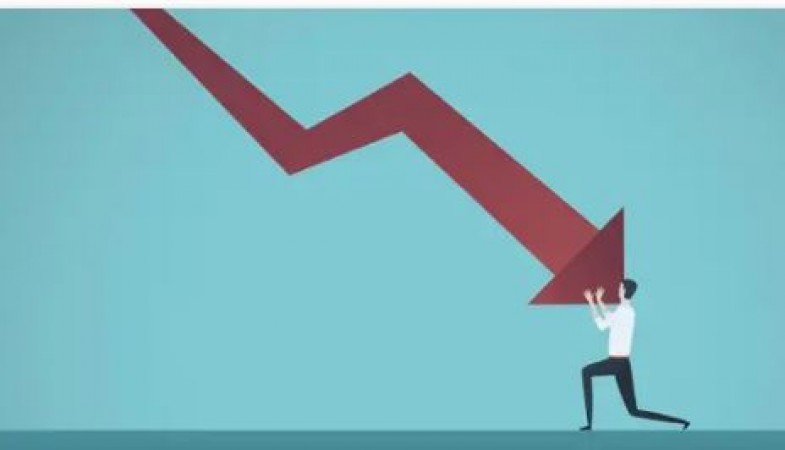
In today's ever-evolving world, the intricate relationship between economic recovery and financial markets plays a pivotal role in shaping the global financial landscape. The interplay between these two forces can have far-reaching consequences, impacting individuals, businesses, and nations alike. This article delves into the dynamics of economic recovery and its profound influence on financial markets, exploring the factors, trends, and strategies that define this intricate relationship. The intricate dance between economic recovery and financial markets is a delicate balance that shapes the trajectory of nations and industries. Economic recovery refers to the process of rebounding from a downturn, while financial markets encompass a wide range of assets, including stocks, bonds, and currencies, where investors buy and sell. The two are interconnected, with economic recovery driving market performance and market fluctuations impacting economic growth.
The Phases of Economic Recovery
Economic recovery is a multi-faceted journey, typically encompassing three distinct phases:
1. Response and Relief
In the initial phase, swift responses are essential to mitigate the immediate impacts of a crisis. Governments and central banks often implement measures such as stimulus packages and interest rate cuts to stabilize markets and boost consumer spending.
2. Recovery and Adjustment
As the crisis subsides, economies gradually shift towards recovery. This phase involves adjusting to the 'new normal' and restructuring various sectors. The job market starts to stabilize, and consumer confidence slowly improves.
3. Expansion and Growth
The final phase is characterized by robust economic expansion and growth. Investments increase, businesses thrive, and innovation flourishes, driving economic prosperity.
The Role of Central Banks in Economic Recovery
Central banks play a pivotal role in influencing economic recovery through their monetary policies. By adjusting interest rates and controlling money supply, central banks can stimulate borrowing and spending or curb inflation, thus shaping the trajectory of recovery.
Impact on Financial Markets
The relationship between economic recovery and financial markets is dynamic, with several market segments responding differently:
1. Equities Market
During recovery, equity markets tend to flourish as investor optimism rises. Companies' increased profitability and growth prospects drive stock prices higher.
2. Bond Market
Conversely, the bond market can face challenges during recovery as interest rates rise. Investors might shift from bonds to stocks in search of higher returns.
3. Foreign Exchange Market
Economic recovery often leads to currency fluctuations, impacting exchange rates. Stronger economies may see their currencies appreciate, affecting global trade dynamics.
Opportunities and Challenges for Investors
The recovery phase presents both opportunities and challenges for investors:
1. Identifying Undervalued Assets
Investors can identify undervalued assets during economic downturns, capitalizing on potential long-term gains as markets recover.
2. Managing Risk in Volatile Markets
Volatile markets during recovery can pose risks. Diversification, strategic asset allocation, and risk management strategies are crucial for investors to navigate uncertainty.
3. Diversification Strategies
Diversifying investment portfolios across different asset classes and regions can help mitigate risks and capture diverse growth opportunities.
Technological Advancements: Catalysts of Recovery and Market Evolution
Technological advancements play a pivotal role in shaping economic recovery and financial markets. Innovations drive efficiency, disrupt traditional models, and open doors to new investment avenues.
Global Trade and its Implications
Global trade is closely tied to economic recovery. As economies regain strength, international trade expands, fostering collaboration and growth across borders.
The Social and Environmental Considerations in Recovery
Economic recovery isn't solely about financial gains; it also includes social and environmental aspects. Sustainable practices are gaining prominence, influencing investment choices.
Government Policies and Fiscal Support
Government policies and fiscal measures, such as infrastructure investments and tax reforms, contribute significantly to economic recovery by boosting job creation and consumer spending.
The Role of Consumer Behavior
Consumer behavior plays a pivotal role in recovery. As consumer confidence improves, spending increases, providing a boost to businesses and industries.
Industry Spotlight: Real Estate Market
The real estate market mirrors economic recovery. Demand for housing and commercial spaces rises, signaling economic revival and growth.
Sustainable Investing in the Recovery Era
Sustainable investing gains traction during recovery as investors prioritize environmental, social, and governance (ESG) factors in their investment decisions.
The Future Outlook: Navigating Uncertainties
While economic recovery is promising, uncertainties persist, including potential setbacks and external shocks. Adaptable strategies and prudent decision-making are essential for sustained growth.
Paving the Way Forward
The intricate interplay between economic recovery and financial markets underscores the need for a holistic approach to navigate opportunities and challenges. As economies rebound, the lessons learned and strategies implemented can pave the way for a more resilient and prosperous future.
Unveiling the Dark Web: A Closer Look at Hidden Data Trade
Unlocking the Potential of SEO in Dynamic EnvironmentsUnlocking Morning Magic: Watering Techniques for Lush Garden